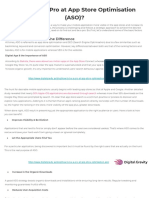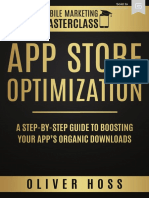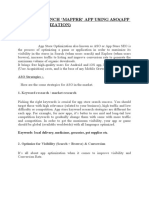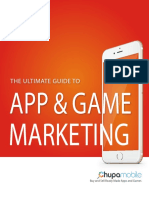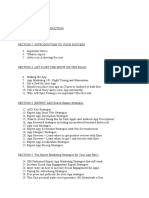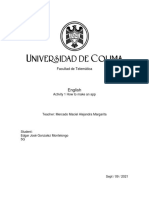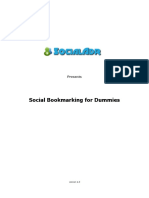0% found this document useful (0 votes)
95 views26 pagesIntroduction To App Store Optimization
This document serves as an introduction to App Store Optimization (ASO), emphasizing its importance for app visibility and downloads. It outlines key elements of ASO, including the app icon, title, screenshots, and keywords, while providing practical tips for optimizing each aspect. The author also shares insights on building brand credibility and the significance of user reviews in enhancing app success.
Uploaded by
maboy85140Copyright
© © All Rights Reserved
We take content rights seriously. If you suspect this is your content, claim it here.
Available Formats
Download as PDF, TXT or read online on Scribd
0% found this document useful (0 votes)
95 views26 pagesIntroduction To App Store Optimization
This document serves as an introduction to App Store Optimization (ASO), emphasizing its importance for app visibility and downloads. It outlines key elements of ASO, including the app icon, title, screenshots, and keywords, while providing practical tips for optimizing each aspect. The author also shares insights on building brand credibility and the significance of user reviews in enhancing app success.
Uploaded by
maboy85140Copyright
© © All Rights Reserved
We take content rights seriously. If you suspect this is your content, claim it here.
Available Formats
Download as PDF, TXT or read online on Scribd
/ 26








